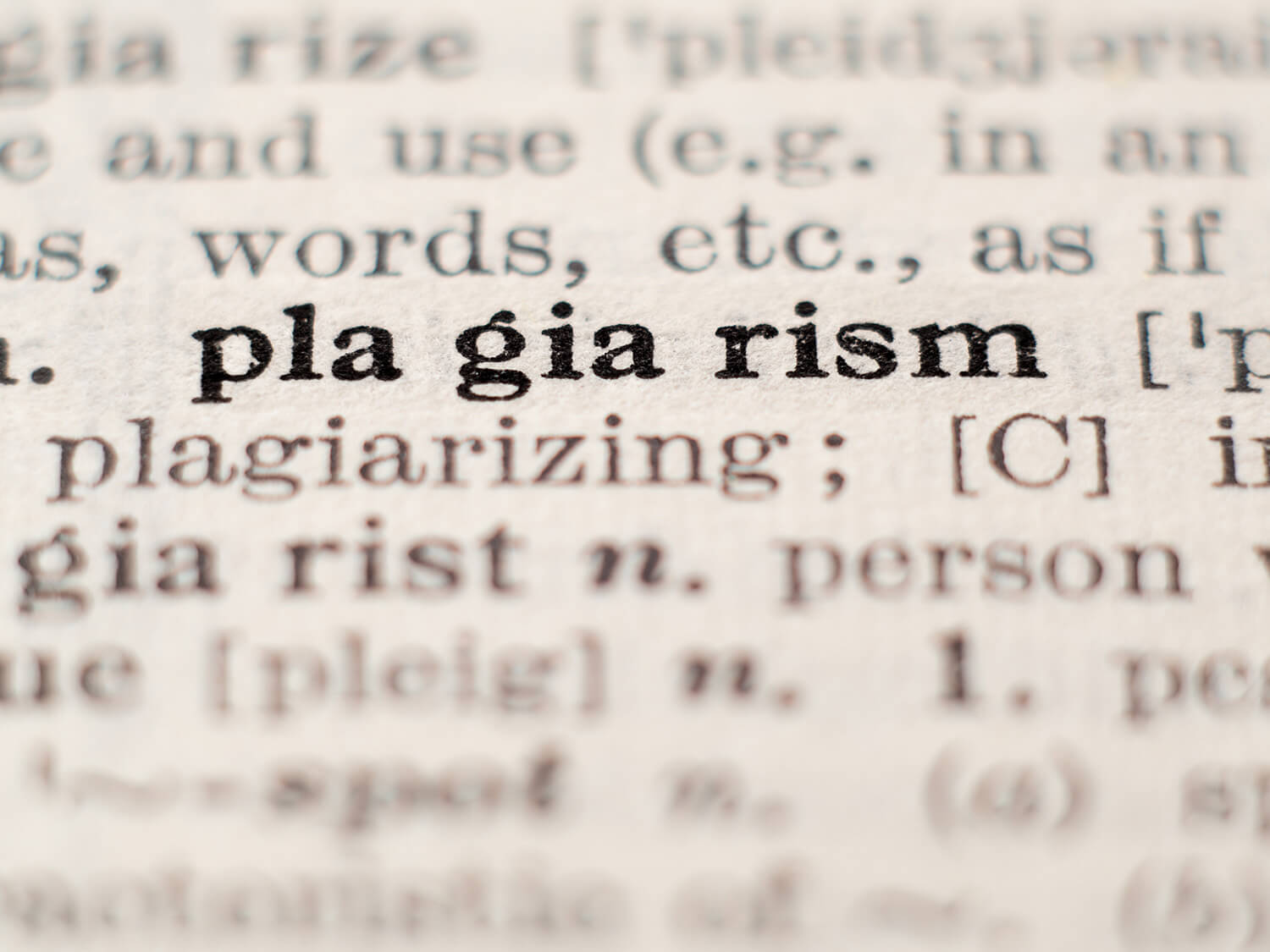Using an AI Checker is now more than ever super beneficial across multiple business industries. With artificial intelligence becoming integrated into our daily lives, having an AI detection tool that goes beyond the normal features is just what you need!
AI Purity is the best AI detector if you want quick, accurate, and detailed results. With the emergence of AI-generated content online, so has there launched plenty of new AI content detectors. With so many choices available, it can be hard to choose which of these detectors to choose from. While we can’t speak for these other platforms, we can only tell you why you should choose and trust AI Purity over the rest. It’s easy to use, free, and most importantly, detailed.
Here’s everything you need to know about content created with AI, what AI detection tools are, and how you can utilize AI Purity at its highest potential.

What Is Plagiarism
The University of Oxford explains best what plagiarism is which is a “breach of academic integrity”. When you pass off someone else’s work or ideas as your own, that is plagiarism. The laws of plagiarism protect both published and unpublished materials in the form of original ideas and text, whether it is from a book, an online source, or generated from ai. These materials cannot be used to be passed off as your own even if the original author agrees. Whether plagiarism is intentional or done recklessly, it remains a disciplinary offense in the academic and professional world.
The use of AI for academic purposes is only permitted once there is explicit permission to do so prior to the assignment or task. Examples of permissible instances where AI can be used for academic purposes are if a disabled student requires help in order to transcribe spoken words in using voice recognition or when students use an AI tool to check spelling and grammar. Without permission or good reason, the use of AI for academic purposes is categorized as plagiarism.

Types of Plagiarism
Different academic institutions could deem different things as plagiarism. But across the board here are some forms of plagiarism that are recognized in prestigious universities like The University of Oxford:
- Verbatim
This type of plagiarism copies an original piece of text word for word without the original author being acknowledged. There are acceptable ways to use an original piece of text and it is with quotation marks and referencing the original source. It should be clear to the readers that that portion of the text is unoriginal and was drawn from another source. - Cut and Paste
To copy or cut and paste information taken from the Internet is another form of plagiarism. Just because it’s taken from the Internet does not mean it doesn’t warrant proper referencing. Text from the Internet is already not deemed as reputable as peer-reviewed sources but it should nonetheless be cited properly. - Paraphrasing
This form of plagiarism uses similar flow and arguments from an original source but alters some words and order while foregoing the acknowledgment of the author. Although referencing the author while completely copying their whole argument and thought is still not enough. For your text not to fall under the category of paraphrasing, it should be clear that you are referencing the original source and make a clear and brief summary of their argument instead of paraphrasing bits and pieces of the original source. - Collusion
This refers to the unauthorized collaboration between students and the failure to acknowledge said collaboration. For group projects, it must be clear which parts are original, and collaborative work should always be made known, otherwise, passing off collaborative work as completely your own will be considered plagiarism. - Inaccurate Citation
Academic writing, depending on the discipline, will be ascribed to different citation formats. Proper citations can be quite tedious but are important to uphold the integrity of the original authors and their work. Depending on the referencing format, you will be required to have a bibliography, to add footnotes, and quotation marks. It should also be clear whenever the source you used is secondary and not primary. - No Acknowledgement
Similar to the collusion type of plagiarism, help from other students, members of academia, and other sources must always be acknowledged for your written output not to be regarded as plagiarized. It is especially important to acknowledge anyone who has contributed to the ideas behind your work. - Third-Party Written Work
Most universities have specific clauses that ban students from passing off someone else’s complete work as theirs even if it was written specifically for the student by professional agencies or persons. In the name of upholding academic integrity, it is important for students to go through the writing and research processes themselves to fully maximize and utilize their knowledge and skills. - Auto-Plagiarism
Despite the work being written by you, it is considered auto-plagiarism if you pass off that same output again. If the work has been published or passed in another course or even a different university, it must be explicitly mentioned. Auto-plagiarism is submitting twice of the same paper or essay even if it is completely yours.

What Is A Plagiarism Checker
Plagiarism checkers as we know them today such as Turnitin.com and Plagiarism.org were created to combat web-based plagiarism according to an article published under Stanford University. Plagiarism.org developed a unique technology called Document Source Analysis that assigns an identifier that becomes unique to each document that is processed by the platform. These identifiers are called digital fingerprints and are used to cross-check new documents that are processed. The platform is able to identify if a document is plagiarized if it contains the same digital fingerprint as an existing document in its database. Even if a plagiarized document has not been stored in their database, “automated web crawlers” are used to scour the web that contains similar content to the plagiarized document. This method is used specifically to combat the verbatim type of plagiarism. For paraphrasing, another technology called Document Source Analysis is much more equipped to recognize plagiarism.
The algorithm behind Document Source Analysis produces “originality reports” that follow the basis of the “plagiarism index”. This algorithm has an unacceptable and acceptable threshold value of unoriginal content and if it’s higher than the accepted value, it is classified as plagiarized. Many online plagiarism checkers have been established since with technologies that even teach students how to remove plagiarism. A plagiarism checker online has done wonders for academic integrity and has made it easier for educators to uphold this principle since checking for plagiarism used to be manually done.
Types of Plagiarism Detection
Here are some of the many ways plagiarism can be identified according to Medium.
Internal
Internal plagiarism detection is done by identifying plagiarized content within the text without being cross-referenced to an original source. Also known as intrinsic plagiarism, this form of detection is done through the identification of writing styles.
External
External or extrinsic plagiarism detection is done by cross-referencing a potentially plagiarized document with its source document or comparing it to an existing reference dataset.
Source Code
Source code plagiarism is prevalent in computer science education and is the copying of code already written by someone else. This is generally hard to identify manually and the detection is done so using platforms like JPlag, a token-based plagiarism detection software specially for source code files.
Natural Language Plagiarism Detection
Language-Independent
Language-independent detection works by identifying text characteristics present in all languages like the number of special characters and sentence length in order to detect plagiarism.
Language-Dependent
Language-dependent detection works by identifying text characteristics that are only present in one language like the frequency occurrence of a word. It is more effective to detect plagiarism like paraphrasing using this type of detection.
Stylo-metry Based
Plagiarism detection using stylometry-based techniques is used specifically to combat “contract cheating”, which happens when a student contracts a third party to write on their behalf. Plagiarism checkers won’t work in this instance so stylometry is used to see if documents were written by the same person.
Content-Based External Plagiarism Detection
Fingerprinting Technique
Through what is called a “hashing” process, documents are given unique fingerprints and then stored into a database. The fingerprinting technique is the most common method in plagiarism detection and uses fingerprints or digital identities and matches them against text inputted in the plagiarism checker.
Latent Semantic Analysis
Uses a mathematical technique called Singular Value Decomposition that simplifies a database of words and documents. A large angle means not plagiarized while a smaller angle points to plagiarism.
Stanford Copy Analysis Mechanism
A database or a library of pre-registered documents is referenced when checking for plagiarism and compared using the Relative Frequency Model and looks for high similarity within the text being checked with the documents in the library.
Natural Language Processing and Machine Learning
This technology easily detects plagiarism through a variety of pre-processing stages like sentence segmentation, tokenization, stemming, number replacement, punctuation removal, and more.
Online Software Tools
Software tools that make it easy to use plagiarism detection online have continued to expand and popular examples include Turnitin.com, Plagiarism.org, and Glatt Plagiarism, Inc.

What Does A Paraphrase Tool Do?
On its own, a professional paraphrasing tool is seemingly beneficial and poses no harm to academic integrity. At its core, a paraphrasing tool basically re-words or rephrases text while retaining its original meaning. It provides an alternate way of conveying a message and expresses the same ideas while using entirely different words. Paraphrasing can also be used to better understand certain passages in the text, especially if it uses words or jargon that is outside your usual vocabulary.
There are right and wrong ways of using paraphrasing tools. The wrong way of using paraphrasing that infringes academic and professional integrity is using paraphrasing to bypass a plagiarism detector. It’s not always possible to do paraphrase detection. There are AI paraphrasing tools that make it hard for plagiarized text to be detected because until recently there hasn’t been paraphrase plagiarism checkers like AI Purity.
Now that AI text generators have been easily accessible for students and professionals, the likelihood of plagiarism happening in academic and professional settings is at an all-time high. When used together, AI text generators and paraphrasing tools can successfully circumvent plagiarism checkers and are a dangerous pair to upholding academic integrity. There could be paraphrasing detection software to stop plagiarism but if the text is generated by ai, it might not be able to detect it. Similar to AI detection and plagiarism checker softwares, paraphrasing detection softwares also uses natural language processing technologies. Along with techniques and technologies like word embeddings, syntactic and semantic analysis, and machine learning models, paraphrase detection is made possible.
What makes paraphrasing wrong also has a lot to do with intent. There are proper ways to paraphrase which still requires writers to properly cite their sources. A probable misconception that makes way for accidental plagiarism is if the words that convey an idea are changed, it becomes original thought which is definitely not the case.

How AI Purity Upholds Academic Integrity
There are plagiarism checkers, there are paraphrasing tools, and then there is AI Purity, a paraphrase plagiarism detector all in one. Until now, there hasn’t been a paraphrase plagiarism checker until AI Purity. Using natural language processing technology, even when ai-generated text is processed with the best paraphrasing tool, AI Purity will still be able to detect it.
On top of detecting ai-generated text, AI Purity takes it a step further to uphold academic integrity and combat plagiarism by detecting AI even after it’s been paraphrased.
To learn more, check out our features page for in depth information about this new technology.
How It Works
A variety of AI tools support students and professionals to be more efficient in their work. There are AI tools that help enhance photos, AI tools for writing, AI paraphrasing tools, and so much more. Using AI tools isn’t inherently bad and can save people a lot of time and energy to do tasks. But as we know it, not everyone uses AI tools for good and its misuse can be detrimental to ethics, professionalism, and academic integrity. Thus, AI Purity was created to combat the misuse of artificial intelligence despite being powered by it. It is a great example of how artificial intelligence can be used for good; ethically and responsibly.
AI Purity has been trained across a multitude of written datasets which allows for unprecedented detection of anything written using artificial intelligence. With state-of-the-art machine learning algorithms, AI Purity is capable of ai-generated text even after it’s been modified and paraphrased in an attempt to outsmart other AI detection tools. AI Purity has achieved a level of sophistication that is possible through the use of natural language processing in scrutinizing text for linguistic features, patterns, sentence structures, and sequences that bear traces of artificial intelligence.
Content integrity is the core goal of AI Purity and we’ve created a platform that has been fine-tuned to keep up with the ever-changing and fast-paced landscape of artificial intelligence. AI Purity is positioning itself as a robust and dependable tool to uphold this core goal.

AI Purity As A Paraphrase Plagiarism Checker
- What is AI Purity’s primary function?
AI Purity is not just a mere AI detection tool. It is designed to analyze and detect a variety of text written for academic and professional purposes to identify what percentage of it is written by AI. Made to combat the growing concerns in professionalism and academic integrity, the name specifically mentions what our platform aims to do; uphold and purity and inviolability of professionally written output. Be it, essays, research papers, dissertations, and so much more. We do not condemn the use of AI but rather advocate for its responsible use. With those goals in mind, AI Purity has gone the extra mile to ensure top-tier AI detection even when the text being inspected has been passed through a paraphrasing tool with the goal of bypassing a plagiarism checker.To know more about AI Purity’s key functions, check out our FAQ page.
-
How does AI Purity identify ai-generated content?
Using cutting-edge technology, machine-learning algorithms, and natural language processing, AI Purity meticulously analyzes the linguistic features, patterns, sentence structure, and AI indicators of the text being inspected. We’ve also trained and tested the platform across a variety of datasets offline like news reports, blogs, scientific and medical texts, novels, scripts, and transcripts from news conferences, state of the Union addresses, scientific and technological interviews, and more. -
Can AI Purity identify subtle paraphrasing and content modification?
AI Purity is equipped to recognize text generated from a variety of AI models and algorithms. It is a versatile tool that even recognizes specific quirks and idiosyncrasies that are unique only to ai-generated text. So much so that despite being processed in paraphrasing tools, AI Purity is able to uncover the reality that the text was originally written by AI. -
What is unique about AI Purity?
AI Purity is a unique paraphrase plagiarism checker on top of being an elite AI detection tool. What makes it stand out is its ability to go beyond the surface of analyzing underlying structures and linguistic features to offer top-tier detection services to its users. AI Purity’s comprehensive reports are unparalleled and never before seen in AI detection. Premium users are able to choose API integration for a more seamless user experience. They also get the most detailed report offered against competitors. Premium users can download a detailed PDF file that includes a per-sentence and color-coded analysis from 100% ai-generated, 100% human-written, and a combination of both. These are unprecedented results never before seen in AI detection and a feature you can only enjoy from AI Purity. -
Can AI Purity be used for academic and professional purposes?
Because of our goals to secure and upkeep the purity of academic assignments and professional requirements, we made sure to cater to a wide range of industries with academia and all professional industries in mind. Even if users aren’t specifically using AI Purity for academic and professional purposes, they can still enjoy the many benefits and features that AI Purity will only continue to expand.

How To Avoid Plagiarism
Artificial intelligence is not going anywhere and we need to use the tools available to us ethically and responsibly. AI tools, whether it be text generators and paraphrasing tools, are there to make tasks easier to complete and allow users to operate more efficiently and effectively with the help of technological advancements. To truly circumvent plagiarism checkers, you can follow these best practices as outlined by the University of California, Los Angeles Library.
- Stop procrastinating
Proper and quality research and written outputs require time. To learn all the necessary parts of an academic or professional written output, one must be informed and take the time to learn so they can make their own takeaways and relay their unique understandings of certain topics. Procrastinating important research and assignments can make you more likely to resort to last-minute plagiarism because of pressure. When one procrastinates, they also lose out on time they could use to research further and edit their papers to ensure they did not commit even accidental plagiarism. - Commit!
Writing well takes commitment. Not only that, when operating within the academic and professional world, one must always commit to upholding integrity within their own work. We may not always stop others from committing plagiarism but we have the choice to do better and do it for our betterment. Plagiarism is the easy way out of submitting requirements but on the other hand, you lose out on valuable learning opportunities that will inevitably be detrimental to your own career and academic standing. - Make proper notes
An important part of ensuring you don’t commit plagiarism is making sure you always acknowledge your sources. So, when you are doing your own research as you should, meticulously note down key information with its complete original or even secondary source to make it easier to cite later during the writing process. - Cite your sources
When referencing your notes to ensure proper citation, make sure you are also following the proper citation instructions depending on the type of source material you are referencing. There are various ways of citing source material from books, magazines, online sources, journals, and even photos. It’s not enough to cite a source when copying word-per-word ideas and you must also use quotation marks. Make sure you are properly citing your sources as a best practice for combating plagiarism. - Use paraphrasing correctly
Paraphrasing isn’t all that bad and there is a way to do so correctly. If you simply use synonyms of the original words used in your sources or scramble the sequence of words and sentences then that constitutes plagiarism. Proper paraphrasing happens when you understand the original source material and are able to relay that information using your own words with your own understanding while still referencing the source. You can use quotes and paraphrase while still referencing the source, two great ways to circumvent plagiarism without having to use a paraphrasing tool. -
Use AI Purity
If you follow all these best practices and want to take that extra step towards ensuring your work can completely bypass a plagiarism checker, then run it through AI Purity’s elite AI detection tool. You’re hitting two birds with one stone by knowing the exact percentages of whether your written output has traces of AI and plagiarism.
